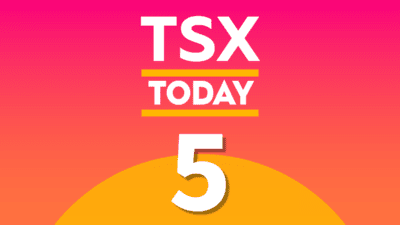While TransCanada Corporation was publicly battling with the U.S. state department over its 820,000 b/d Keystone XL project to bring crude from Alberta to the Gulf Coast refining complex, Enbridge was quietly proposing a plan to bring crude to the same destination by capitalizing on its existing rights of way.
In its recent Investor Day presentation, Enbridge Inc. (TSX:ENB)(NYSE:ENB) outlined a new plan to add another 800,000 b/d of capacity to the Gulf Coast, with no cross-border permit required and only small approvals required. This would effectively transport the same volumes to the same destination as Keystone, but with a much lower risk regulatory pathway.
With 800,000 to one million b/d of highly certain oil sands production coming online before 2020 (with up to another million barrels in the decade following), more pipeline capacity will be required. Enbridge’s plan may be the lowest-risk way to meet this demand.
Enbridge has been capitalizing on its current network
Currently, Enbridge’s mainline system has the ability to transport about 2.6 million b/d of crude from Edmonton, Alberta to Superior, Wisconsin. From there the pipeline connects to a series of other Enbridge pipelines that bring crude to the Gulf Coast.
Enbridge’s key advantage lies in the fact that it already has cross-border permits for its mainline. Enbridge is able to use this to its advantage to increase its capacity within the limits of its current permits.
As an example, part of the mainline is the Alberta Clipper pipeline, also known as Line 67, which crosses the U.S. border. Enbridge just completed a multi-year project to upgrade Line 67’s capacity from 120,000 b/d to 800,000 b/d. Currently, Enbridge states that this pipeline is being used at full capacity.
Enbridge did encounter an issue due to the fact that the original Line 67 was only permitted to carry about 450,000 b/d. Enbridge is waiting on a state department approval to increase the capacity, but in the meantime it has been able to deliver all of Line 67’s new capacity by transferring it over to its Line 3 pipeline—which has both spare capacity and a cross-border permit—before crossing the border then transferring back to Line 67 after crossing the border.
This process allowed about 680,000 b/d of new crude to head to the Gulf Coast, all while Keystone XL was in the midst of a heated battle to cross the border. Enbridge will be able to continue to expand capacity using these same competitive advantages.
Enbridge has unveiled a new plan to add another 800,000 b/d
Enbridge estimates that 450,000 b/d of new pipeline capacity will be needed before 2020, and potentially another one million barrels per day of capacity will be needed before 2030.
With Keystone XL being rejected, and Enbridge’s export pipeline—Northern Gateway—seeming unlikely due to an oil tanker ban off the coast of B.C. where it would terminate, there remains a pressing need for capacity to bring crude to tidewater for export.
Enbridge’s solution is to expand its current mainline pipeline by about 800,000 b/d, and then—across the U.S. border—add expansions to its existing infrastructure to bring the new capacity from the mainline down to the Gulf Coast.
How would Enbridge do this? Currently, Enbridge is the midst of a massive project to replace and upgrade its aging Line 3 pipeline, which is part of the mainline. When Line 3 is restored, it will return to its previous capacity of about 400,000 b/d. However, Line 3 actually has a capacity of about 800,000 b/d.
With the appropriate downstream infrastructure in place, Enbridge could use the entire Line 3 pipeline, which would allow Enbridge to add another 400,000 b/d to the current 400,000 b/d capacity on Line 3. On top of this, Enbridge has identified an additional 400,000 b/d of expansions on the mainline, and when you combine this with the full capacity of Line 3, the result is 800,000 b/d of new capacity.
Since this new capacity would get bottlenecked once it crosses the border, Enbridge has identified a series of expansions south of the border to handle it. The end result is that while other pipelines are struggling with regulators, Enbridge will continue to add capacity the Gulf Coast just as it has done over the past several years with its Alberta Clipper expansion.







